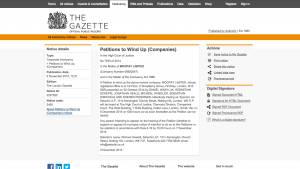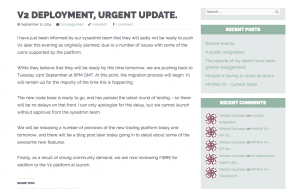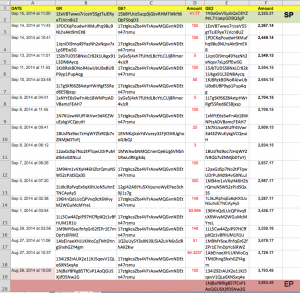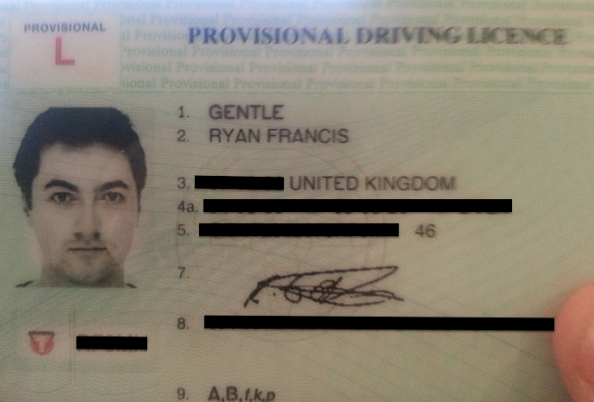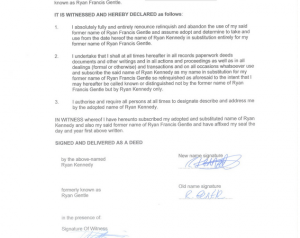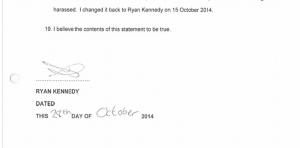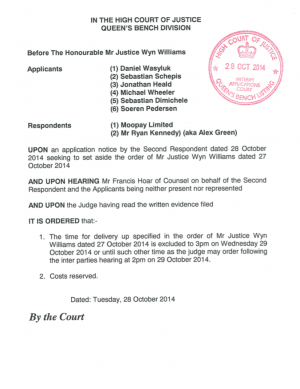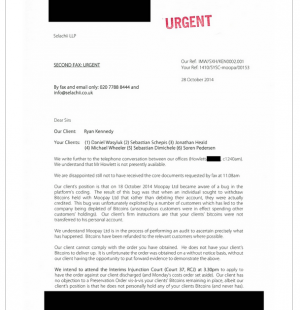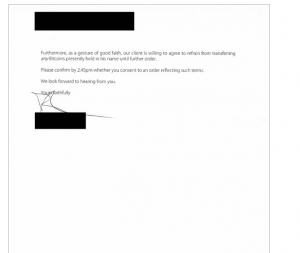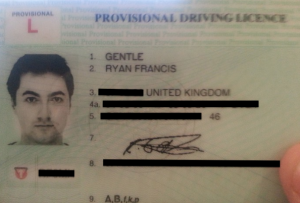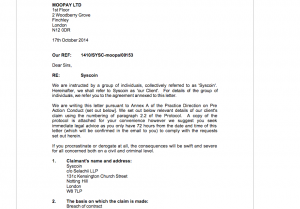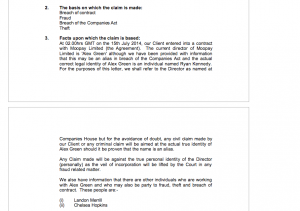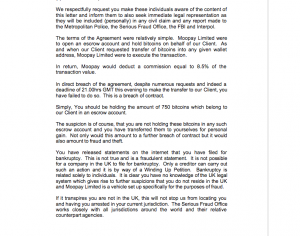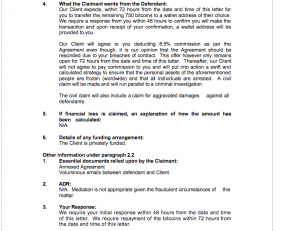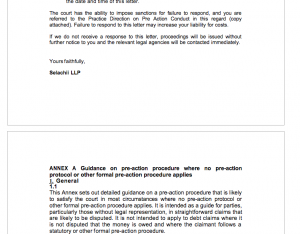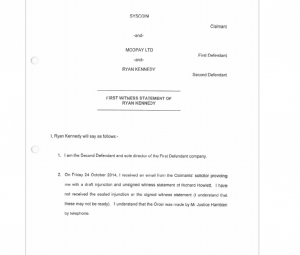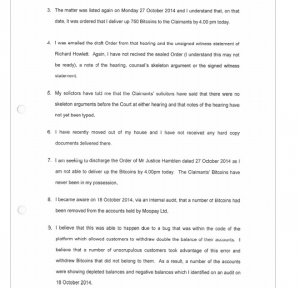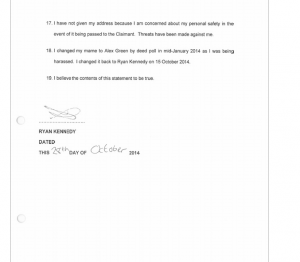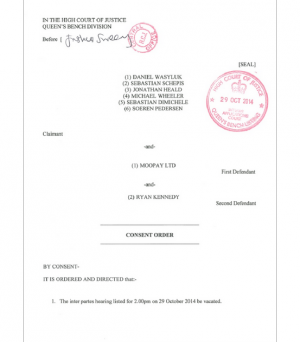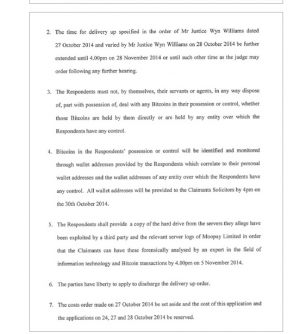Draft 1.0
HYPOTHESIS
Green has misappropriated customer dogecoins held on deposit with Prelude.io, OR Green misled his customers and the dogecoin community when he represented that a certain wallet was Prelude’s and that customer dogecoin balances were stored in a certain manner, in a certain location.
INTRODUCTION
Reliable and meaningful information about Moolah (M), Mintpal (MP), and Alex Green (AG) is sparse. This is unfortunate because M, MP, and AG are alleged to have caused numerous people substantial economic damage and may have committed several crimes in the United States and elsewhere.
This post will attempt to provide reliable and meaningful information about M, MP, and AG by reconstructing, as much as possible, the transaction history of an known dogecoin wallet believed to be used by M. (Prelude Transaction History)
M’s dogecoin holdings are significant given that M had a loyal following within the Dogecoin community. The following was cultivated, in part, because AG and other M personnel were very involved and visible in the community.
Transactions involving known M wallets are worthy of analysis given that such transactions, in addition to being indicative of a monetary relationship generally, are symbolic of legal, moral, and enterprise-level relationships between the owners of said wallets.
BACKGROUND
It is well known that Alex Green was a controversial character in the Dogecoin community.
Controversy stemmed from a mixture of AG’s personality, business practices, and unusual actions/behavior [collectively, events].
It is also well known that said “events” have been ongoing since at least the time that AG began posting as moolah_ (Reddit & IRC) and @moolah_io (Twitter).
Each “event” has meaning and is a clue to understanding what has happened and what is happening with M, MP, AG. The relationships between events might be especially insightful to those individuals trying to better understand the past, present, and possible future with regards to M, MP, and AG.
Given, the foregoing background, this post will . . .
- Help build a foundation for discovering relationships between events. Specifically, this post will identify the transaction history of an M-related wallet so that individual transactions and wallets from said history can be investigated (Prelude Transaction History); and,
- Briefly analyze a sampling of transactions.
OBJECTIVES
A. Identify Trail of Doges
Begin mapping the inputs and outputs of dogecoins from Dogecoin wallets believed to be AG’s or M’s.
B. Build analytical foundations
Highlight notable & significant transactions from starting point to present time.
C. Develop new leads & identify areas of further study
Identify gaps in data and limits in this post’s scope.
METHOD
A. Identifying the Trail of Doges
1. Identify a wallet; pick a starting point on the block chain.
Identify an M wallet that is identified as an M wallet by AG. Identification must be from a document, post, media or other source widely understood as being drafted, produced or otherwise operated by AG.
2. Identify as the “starting point” (SP) the earliest point at which said wallet was identified by AG as an M wallet (starting point).
- Identify debits subsequent to SP.
- Capture all recipient wallet addresses and the dates on which said transactions occurred.
3. Identify inputs to the M wallet or converging/merging of multiple wallets with the M wallet.
4. Determine whether there is a remaining/current balance.
B. Building analytic foundations
1. Note as a significant wallet (SW) any payee wallets appearing more than once as recipients in a transaction.
- Summarize total amount paid to each SW.
2. Mark as a notable wallet (NW) any payee wallets that correspond with or match notable events and individuals in the Dogecoin and digital currency communities.
- Summarize total amount paid to each NW.
C. Possible Limitations
1. Lack of identifying information beyond public keys.
2. Use of change addresses.
3. Overly simplistic. Blockchain analysis, computer programming/coding, and the like are beyond my skill set. This post should be seen as very basic and as quite possibly having errors.
4. Confirmation bias.
DATA
A. Data Points
1. Wallet – For the purposes of this post, I will use a dogecoin wallet represented by AG as being used to operate Prelude (Prelude.io), M’s first digital currency exchange (See, Prelude Transaction History).
Said wallet was identified by AG as being an M wallet on May 1, 2014. The identification happened on M’s blog, which has been deleted. However, the posting was preserved by Follow the Coin, where M is listed as a contributing author.
In his blog post, AG states the following:
On Prelude (which uses an internal ledger), there is currently 158315247.58584696 DOGE listed as the total sum of all balances. Funds are shifted to cold storage once they hit the 200M mark. This tallies with the amount in the main Prelude wallet. I have sent this exact amount of funds from the Prelude account, to a new address within that account.
Note, the funds are represented as being customer funds as a function of them being exchange balances.
The transaction where AG moves 158315247.58584696 DOGE from one Prelude account to another has the following transaction identification number:
- TX ID: 8c866dd2deb43a78a9c4ba7d9473ada1bac0b6759bc43d0792f45740b4557bad
It appears that this transaction happened a day before AG’s blog post, on April 30, 2014. I’m unsure of whether this is due to the way time is displayed on my computer or some other reason. Likewise, I’m unsure whether the reason matters to the investigation given that AG represented to the public, in an attempt to earn trust and quell fears, that the wallet identified was under the control of M as a business and that the contents of the same were for the operation of the Prelude exchange specifically (as opposed to merchant accounts, for example). For this post, April 30, 2014 will be considered the day of the transaction.
In said transaction, the sending wallet is identified with the following public key:
In said transaction, the receiving wallet is identified with the following public key:
2. Stating Point – Given the above-identified wallet, the SP for our investigation is April 30, 2014.
3. Transactions subsequent to the SP are view in the Prelude Transaction History. Said transactions were charted manually using the blockchain explorer at Chain.so. The transactions are current as of November 2, 2014.
B. Some Analytics
1. SWs
Outputs
- DEVLJVn2R3WxGpFwKofRLwmmDHnwfT6zeH____(2x – D17,091,019.19)
- D6nWkVuaevdzpP2mogf8DV4CgRvUs21bVa______(2x – D4,999,999,999.92)
- DH8HWYfxyBGTaF3Bg8eKWNjwu8CP9UBwLf_____(4x – D5,085,042 total)
- D7xQuMq9vNzKkjP5VEf6GdhmfT3Z2SkRCL_______(2x – D1,963,766.93)
- D5ijLsBRJuyeCC6gdnhR7sgXtT487s43a8_________(~23x – <D1 )
- DPMvTtZwXjLG1jxcZC1Qdye8dBEhZJAcwP_______(~36x – <D50)
Inputs
- DHqSibuVV96qeLB9g9Vn6rSVFJVghHi4fh (merges w/ balances from several other wallets).
- DNpJQ9dCkZzE7DmcT4qKW244nfbnn3qtYf (merges w/ balances from several other wallets).
2. NWs
OBSERVATIONS
1. AG either lied on May 1, 2014 about how he was holding customer funds and what amount of dogecoin he did in fact hold, OR he spent from the Prelude exchange wallet. Hypothesis possibly confirmed.
2. Assuming the wallet studied herein was in fact the Prelude dogecoin wallet, it appears that Prelude lacked volume.
3. Assuming the wallet studied herein was in fact the Prelude dogecoin wallet, it appears that AG still has access to it.
4. Assuming the wallet studied herein was in fact the Prelude dogecoin wallet, the customer dogecoin deposits on Prelude were never transferred to Mintpal.
5. Possible mixing of coins. The timing, frequency, and amount of deposits to two addresses (D5ijLsBRJuyeCC6gdnhR7sgXtT487s43a8 & DPMvTtZwXjLG1jxcZC1Qdye8dBEhZJAcwP) suggest the possibility of mixing.
6. Green is sitting on a current dogecoin balance in excess of 70M dogecoin (remember, these were represented to be customer funds). Said wallet is here: DFuc88sKWtYRsLXW2oK1jVVw5oGS6ptdSG.
AREAS OF FUTURE STUDY
1. Analysis of wallets inputing funds into DFkxdX554g8QPhF7c2fNPpVtZK9Mp1RTaq. The goal is to learn anything about the Prelude depositors. There were 53 inputs into said wallet, some addresses inputting more than once.
2. Analysis of each recipient wallet since the SP. The goal is to determine who many payments/withdraws were the result of customers withdrawing vs. expenditures by Green. The results may help clarify the actual purpose of the wallet.
3. Building on numbers 1 and 2 above, studying the expenditures of each payee wallet to determine additional connections to the M, MP, and AG enterprises (i.e., MooFarm 1& 2, Charity Drives, etc.).
4. Comparing each expenditure from the “prelude” wallet with various events, such as the Spring Talladega Race, major tips given out by AG, and other controversies.


